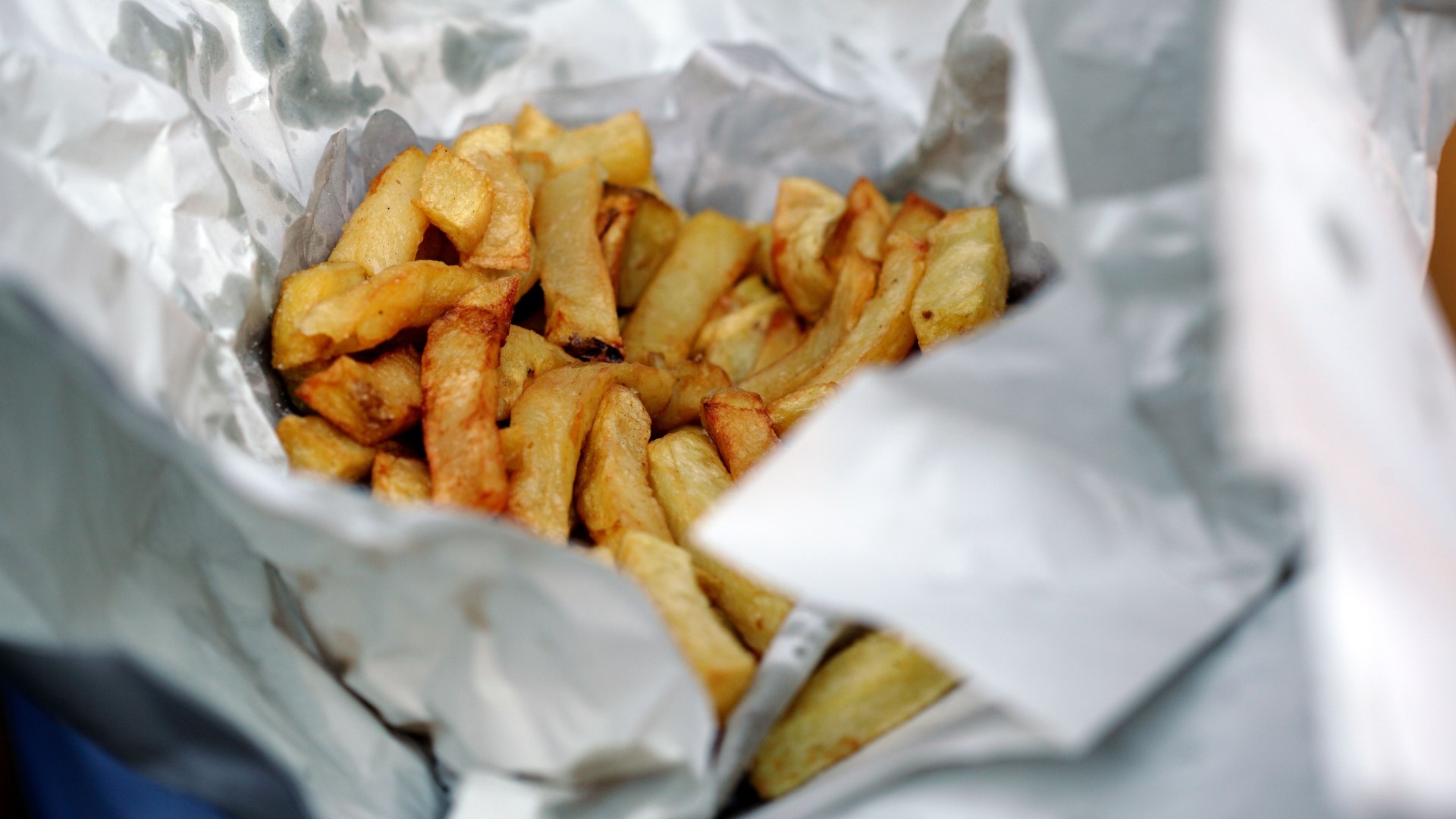OUR love of chips, bread and cakes holds millions of us back from a slim waist and perfect health – and it dates back thousands of years, according to a study.
Scientists have found that cavemen and even Neanderthals had the same genes that make modern man crave carbs.
1
The prehistoric gene, known as AMY1, speeds up sugar digestion with an enzyme called amylase in our saliva.
It explains why humans can’t resist starchy foods like potatoes, bread, pasta and rice – plus baked goods like doughnuts and biscuits.
They are high in energy-packed carbohydrates that would have helped us survive when food had to be homemade.
Brits are obsessed with starch-heavy foods, with fish and chips ranked as our favourite meal.
Chips, beans on toast, mashed potatoes and bangers and mash all also make the top 10, YouGov polling shows.
People with more copies of the gene were likely digesting starch more efficiently and having more children
Dr Omer Gokcumen
Study author Dr Omer Gokcumen, from the University of Buffalo in New York, said: “The idea is that the more amylase genes you have, the more starch you can digest.
“This allowed humans to adapt to shifting diets as starch consumption rose dramatically with new technologies and lifestyles.”
His research studied DNA from 68 ancient human remains dating back thousands of years, to work out when the AMY1 gene became common.
It started an estimated 800,000 years ago in pre-human Neanderthals, he wrote in the journal Science.
The gene became more widespread in hunter-gatherers who lasted until about 11,000 years ago and would have eaten wild potatoes.
Then modern humans started farming crops like wheat and corn and they developed even more copies of the genes as they ate more flour and vegetables.
Dr Gokcumen said: “People with higher AMY1 copy numbers were likely digesting starch more efficiently and having more children.
“Their lineages ultimately fared better over a long evolutionary time frame.”
The number of gene copies was highest in the most recent people.
Westerners now get about half of our energy from carbohydrates – but most eat even more than this and gain weight from the excess sugar.
What a balanced plate looks like

How can you make sure you are eating a balanced, filling and nutritious plate at every meal?
Think of your plate divided into different food groups – protein, carbs, fat and fruit and veg.
Protein: David Wiener, training and nutrition specialist at AI-based lifestyle and coaching app Freeletics, told The Sun: “Aim for one to two palm-size portions of lean protein in each meal.”
Protein includes meat (chicken, turkey, pork, beef), beans, peas, lentils and fish.
The NHS Eatwell Guide says to choose lean cuts of meat and mince, and eat less red and processed meat like bacon, ham and sausages.
Aim for at least two portions (two x 140g) of fish every week, one of which should be oily, such as salmon, sardines or mackerel.
Carbs: Carbohydrates should make up about a third of your plate, or a fist-sized portion.
The Eatwell Guide says: “Choose higher fibre or wholegrain varieties, such as wholewheat pasta and brown rice, or simply leave the skins on potatoes.
“There are also higher fibre versions of white bread and pasta.
“Starchy foods are a good source of energy and the main source of a range of nutrients in our diet.”
Fat: Generally the advice is to think of fat like a thumb-sized amount on your plate.
The Eatwell Guide says: “Remember all types of fat are high in energy and should be eaten in small amounts.
“These foods include chocolate, cakes, biscuits, sugary soft drinks, butter, ghee and ice cream.
“They’re not needed in our diet, so should be eaten less often and in smaller amounts.”
But a small amount is still essential for the diet. Try and eat more unsaturated fats (avocado, nuts, olive oil), which are healthier than saturated fats (butter, hard cheese, sour cream).
Fruit and veg: David says: “Make sure you also get lots of colourful fruit and vegetable carbohydrates too.
“Aim for at least five of these portions a day.
“One to two fist-sized portions of fruits and vegetables with every meal is generally recommended.”
Fruit and veg can be fresh, frozen, tinned or dried. You can roast, boil, steam or grill veggies.



